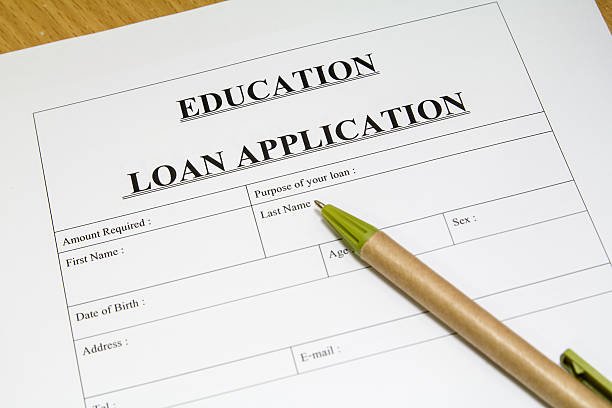
Running a school is no easy task. With ever-growing needs for infrastructure development, maintenance, and modernization, managing finances can become overwhelming. Whether you’re planning to renovate your school building, upgrade facilities, or even expand your campus, a school loan might be the perfect solution to help you achieve these goals.
At Suvidha Finance, we understand the unique challenges educational institutions face when it comes to financing school maintenance and development. To make it easier for you, we’ve put together this comprehensive guide to answer your most frequently asked questions about school loans.
1. What is a School Loan?
A school loan is a type of financing that educational institutions (such as schools, colleges, or coaching centers) can take to fund various infrastructural needs. These loans can be used for renovation, repair, expansion, and general maintenance of school buildings and facilities. It helps schools meet their financial requirements without putting too much pressure on their daily operations.
2. What Can School Loans Be Used For?
School loans can cover a wide range of purposes related to school maintenance and development, such as:
- Renovating or upgrading classrooms
- Repairing school buildings or infrastructure
- Building new classrooms or facilities
- Enhancing playgrounds and outdoor areas
- Purchasing furniture, fixtures, and equipment
- Upgrading security systems and other safety features
If your school is in need of repairs, expansion, or any other maintenance work, a school loan could be an ideal way to finance these projects.
3. How Do I Qualify for a School Loan?
The eligibility criteria for a school loan can vary depending on the lender, but generally, you will need to meet the following requirements:
- Established School: Your institution should have been operational for a certain number of years, typically 2-3 years.
- Good Credit Score: Lenders often check the credit history of the school and its management to assess risk.
- Clear Purpose: You must have a well-defined plan for how the loan will be used (e.g., for facility improvements, expansion).
- Documents: Basic documents such as registration papers, financial statements, and tax returns may be required.
At Suvidha Finance, we aim to make the loan application process as easy as possible for schools by providing clear guidelines and support throughout the journey.
4. What Types of School Loans Are Available?
There are a few types of loans that educational institutions can apply for:
- Term Loans: These loans are typically repaid in installments over a fixed period of time. They are ideal for schools that need large sums for significant improvements.
- Working Capital Loans: These are short-term loans to cover the school’s operational expenses or urgent repairs.
- Overdraft Facilities: If your school requires more flexible financing for small and regular expenses, an overdraft facility could be the right choice.
- Collateral-Free Loans: Some financial institutions offer unsecured loans for schools, especially if the loan amount is relatively small.
At Suvidha Finance, we offer various loan options tailored to the unique needs of educational institutions.
5. How Much Can I Borrow for My School?
The loan amount you can borrow depends on several factors, including:
- The scale of the renovation or expansion project
- Your school’s creditworthiness and financial health
- Repayment capacity and loan term
A general rule of thumb is that lenders may offer loan amounts based on a percentage of the total project cost, with the ability to repay comfortably.
6. What Is the Interest Rate on a School Loan?
The interest rate on a school loan can vary depending on several factors:
- Loan amount
- Repayment term
- The lender’s terms and conditions
Interest rates can be competitive, but it’s important to shop around and compare offers from various lenders. Suvidha Finance offers flexible terms and competitive rates to make repayment easier for educational institutions.
7. What Is the Repayment Process for School Loans?
Repayment terms can vary based on the loan type. Most school loans are repaid in monthly installments over a period of 1-5 years. Schools can choose loan terms that align with their financial planning and cash flow.
- EMI Option: You can opt for monthly installment plans to repay the loan, making it easier to manage cash flow.
- Flexible Repayment: Some loans offer flexible repayment options, such as balloon payments or step-up EMIs.
At Suvidha Finance, we provide customized repayment plans that can be tailored to fit the school’s budget and needs.
8. How Long Does It Take to Get a School Loan?
The time it takes to get a school loan depends on the lender, the loan amount, and the documentation process. Typically, the loan approval and disbursement process can take anywhere from a few days to a few weeks. However, if you have all your paperwork in order and meet the eligibility requirements, you can expect a quicker turnaround time.
9. What Are the Benefits of School Loans?
School loans provide several key benefits:
- Improved Facilities: With the right loan, you can renovate and upgrade your school, making it more attractive to students and parents.
- Financial Flexibility: Loans give you the flexibility to spread out the costs of large projects over time, instead of bearing the entire burden upfront.
- Increased Enrollment: Better facilities and infrastructure can lead to higher student enrollment, ultimately improving your school’s revenue.
10. How Can I Apply for a School Loan from Suvidha Finance?
Applying for a school loan from Suvidha Finance is simple and straightforward. You can start by contacting us through the following:
- Phone: +91 83970 44041
- Email: info@suvidhafinance.com
- Website: suvidhafinance.in




















